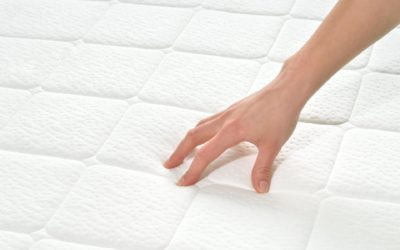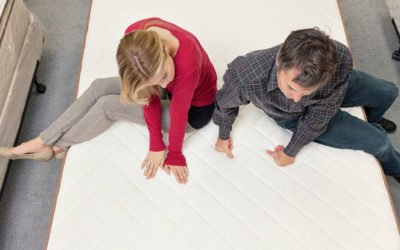Every year up to 40% of the population will suffer a bout of back pain. According to the Office of National Statistics almost 31 million work days were lost in the UK in 2016 due to musculoskeletal problems including back pain. If you have a bad back, continue reading to find the best mattress for you.
Back problems can keep you up at night, prevent you from getting a good quality night’s sleep and can be an energy-zapper during the day. If you’re one of the unlucky ones, prone to aches and pains, you will find that the state of your bed will quickly become a priority. A good bed that provides correct support and comfort has an important role to play in relieving and preventing back pain.
So what is the best mattress for a bad back? The simple answer is “one that you find most comfortable and supports your body correctly”. There’s no single right bed to ease a back problem and each different back problem also may require a different solution. The best approach is to research the options carefully. Take time to try them out and choose what you personally find supportive and comfortable, regardless of labels or even price tags.

Are very firm or orthopaedic mattresses best for bad backs?
There are still a couple of myths surrounding mattresses for back pain. The first one is that you need a firm or very firm mattress and the other is labelling a mattress as ‘orthopaedic’. Both are misleading.
The term ‘orthopaedic’ generally just means an extra firm bed; it is not based on any medical or other common standard. Back in the day, many doctors recommended patients with bad backs buy a firm mattress or place a solid board underneath their current one to ‘firm it up’! Thankfully this type of advice is very rare nowadays as the medical profession has a greater understanding of back problems and the importance of choosing a mattress that provides correct support rather than just feeling like a brick.
Remember don’t just buy a bed because it says it’s good for your back.
What type of sleeper are you?
If you are a side sleeper, an overly firm mattress will result in pressure points on shoulders and hips, pinching the nerves and causing numbness or pain. Side sleepers typically require a mattress with softer cushioning layers such as memory foam or latex foam to provide pressure relief whereas back sleepers will require something a little firmer. If you tend to sleep on your front, which isn’t recommended and puts tremendous strain on the neck muscles, a firmer mattress would be preferable. The key is maintaining correct spinal alignment (as if you were standing upright).
There are so many different reasons why you may be suffering from back pain. It could be muscular, joint problems or a slipped disc. You need to receive a professional diagnosis from a doctor or specialist.
Of course, sleeping on an unsuitable or unsupportive mattress is only going to exacerbate the back problem – whether that’s a mattress that is too soft or too firm. It’s about finding a mattress that provides the correct amount of core support for your spine whilst offering comfort and pressure relief provided by the layers of upholstery fillings.
How do you define comfort?
Comfort is such a subjective matter and there lies the problem. What one person finds comfortable, another may find truly uncomfortable. For example, a medium support mattress may be ideal for someone of average build and weight whereas a 19-stone rugby player would find it too soft and it would be unlikely to support their bulky frame properly. On the other hand, their ideal mattress would be totally unforgiving for an 8-stone ballet dancer and it would be akin to sleeping on the floor.
How much should you spend on a mattress if you have a bad back?
Just because you have a problem with your back doesn’t mean you have to spend a fortune on getting the right mattress. It’s about finding the correct balance of comfort and support. Having said that, you’re unlikely to achieve a good level of long-lasting comfort from a budget-priced mattress where usually only the cheapest filling materials are used over a basic spring unit. Spend as much as you can comfortably afford but bear in mind that you spend more time using your bed than any other household item. A £1000 bed for two people only costs about 20 pence per night each, spread over a typical product lifespan of seven years.
Try before you buy
We strongly recommend that you try your mattress or bed before purchasing. If you’re shopping in a bed store, discuss your requirements with the sales adviser who should be able to select a few products for you to try from the information you give them.
Narrow your choice down to two or three and then spend plenty of time lying on these in your normal sleeping positions. 10 minutes should be the minimum for each bed – but feel free to spend half an hour or even an hour if that’s what you want to do. If you are shopping online, there are now several ‘one mattress suits all’ brands that will deliver your mattress to your door. These mattresses arrive rolled up in a box and often give you a 100-night trial to try. If you don’t like it, for whatever reason, they will collect it and refund you.
We hope you find this information useful and remember, the best mattress for a bad back is the one you find the most comfortable and supportive.






0 Comments